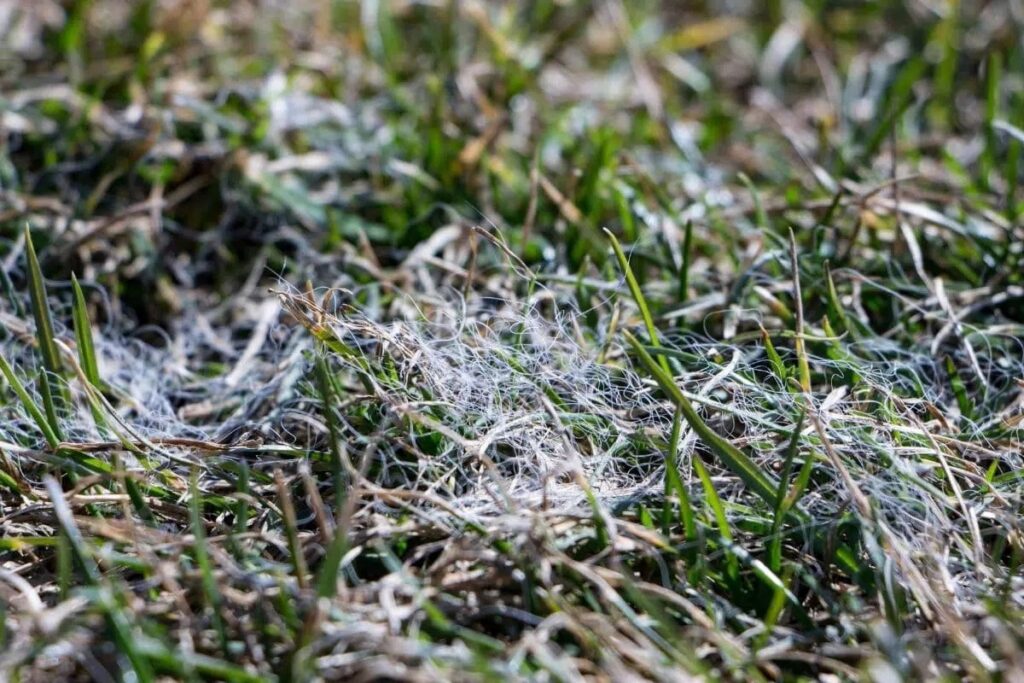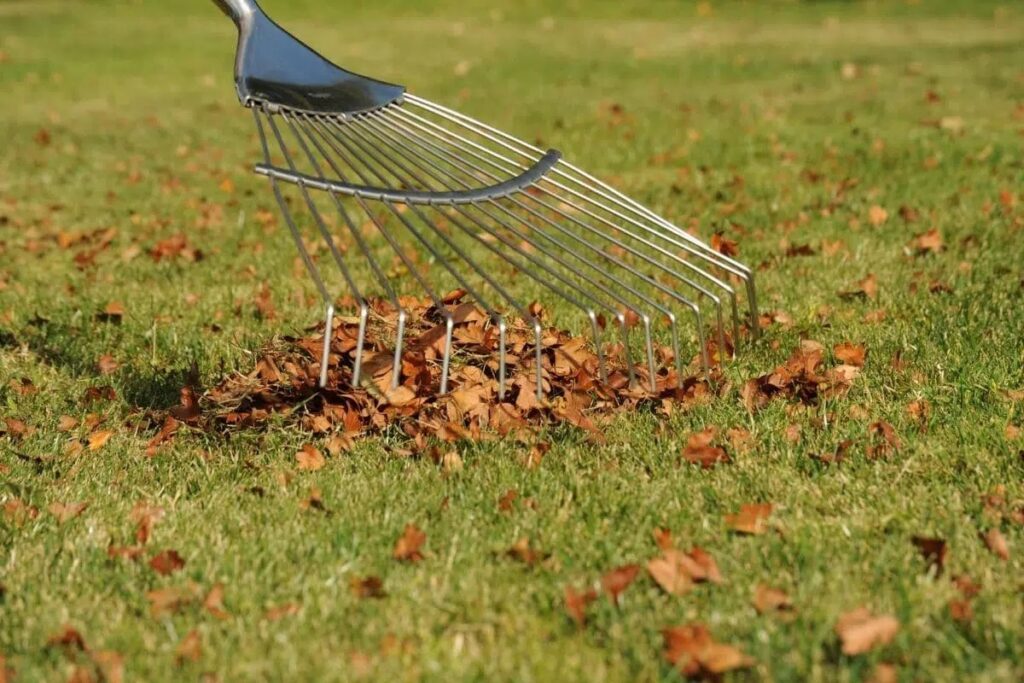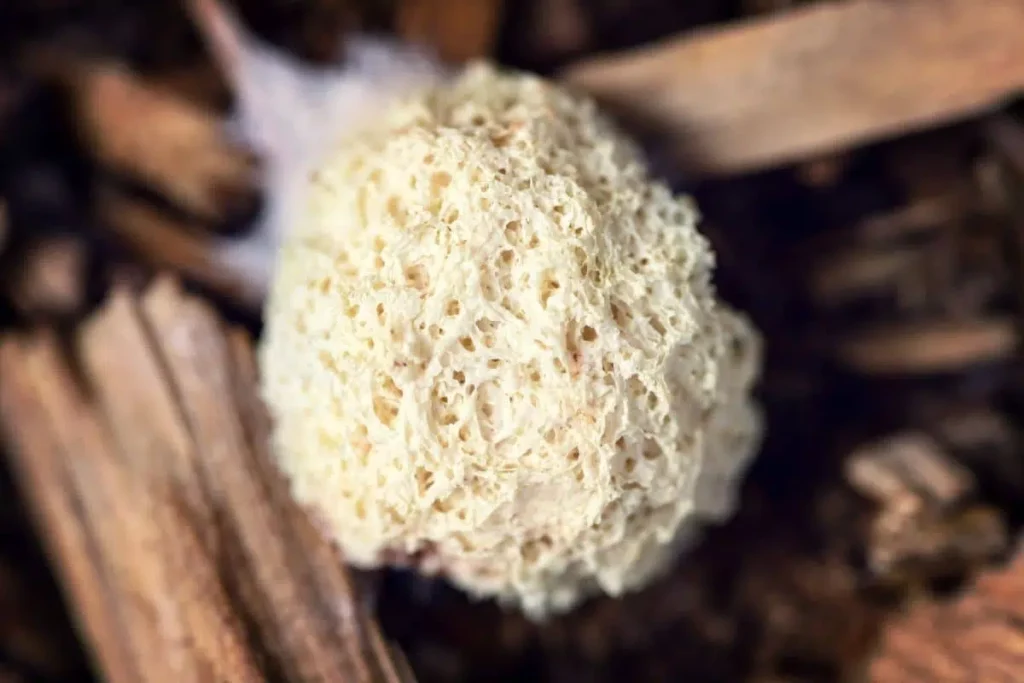A yellow slime fungus is not a lawn disease, because the fungus can appear anywhere, but it is still unpleasant by smell and consistency. With sustainable lawn care, the fungus disappears in a short time.
- yellow slime molds are non-toxic and not dangerous for the lawn
- the cause is a warm and humid climate and dead organic material as a basis for life
- generously cut out affected areas with a spade and dispose of them
- slime mold is insensitive to fungicides
- regular lawn care and a dry environment prevents the formation of slime mold
Contents
- 1 Description
- 2 Causes
- 3 Acidic environment preferred
- 4 Control by erosion
- 5 Fungicides unnecessary
- 6 Differences from lawn mold
- 7 Prevent new infection
- 8 Frequently asked questions
- 9 Is a yellow slime mold dangerous for pets?
- 10 Does a change in pH help prevent reinfection?
- 11 How to change the pH with home remedies?
- 12 Author
Description
The class of slime molds includes over 1000 species worldwide and new species are being discovered all the time. The yellow slime mold, which is also known as yellow tan or witch butter is distributed worldwide. It prefers to colonize dead wood, but is occasionally found in lawns.
Characteristics:
- Scientific name: Fuligo septica
- irregular shape
- similar to small cushions up to 3 cm high
- color spectrum: white to light yellow; in later stages of development also red and brown tones or greenish coloration
- spreads creeping
- dead parts leave a slime trail
- The yellow tan flower has the adv
antage that it is not poisonous. In some countries it is even considered a delicate edible mushroom.
Note: You should refrain from eating yellow slime mold unless it is 100% identifiable. In addition, the ideal harvest time is difficult to identify and over-aged mushrooms can cause gastrointestinal distress.
Causes
A yellow slime mold can occur throughout the year if the weather is suitable. A warm, humid climate is ideal, which favors growth and spread. One cause of why yellow tan blossom enters the garden is by introduction via bark mulch.
Bark mulch is often found as a cover in purchased potted or container plants. However, the fungal spores can be spread through the air. Therefore, the cause does not necessarily have to be in your own garden, the spores can also come from the neighbor, for example.
Acidic environment preferred
A yellow slime mold can spread across the lawn starting from a bed of bark mulch. If you do not have bark mulch in your garden, you should mainly control the areas under trees. Due to their preference for rotting wood, they also prefer areas in the garden with more acidic soil. In addition, there are small remnants of branches, which they use as a basis for life.
The following factors must be present for a yellow slime mold to colonize and spread:
- constant humidity
- partial or full shade
- at least slightly acidic soil
- suitable climatic conditions (spreading mainly from June to September)
Note: The yellow slime mold spends the first time under the ground. Only when it is ready to spread its spores does it come to the surface.
Control by erosion
A yellow slime mold is unappetizing at first glance, and slime molds are not perceived as fungi at first. However, are similar to other fungi to fight.
The only tool you need is a spade. With it, poke the affected area in the lawn at least the depth of the spade. Pay close attention to slime traces, because there was already the fungus and there may still be remains in the soil. You should not throw the soil on the compost, but dispose of it in the organic waste garbage can.
Note: If the slime mold is also in other areas besides the lawn, you should also remove and dispose of the material there to prevent it from spreading again.

The slime mold prefers to settle in moist places, so you should not simply fill the excised area with soil, but create a drainage so that the water can drain away well.
To backfill, proceed as follows:
- bottom layer: fill in approx. 10 cm of coarse stones and gravel
- middle layer: fill in about 5 cm of fine gravel
- top layer: the top layer is a mixture of 1/3 sand and 2/3 garden soil
Once the hole is backfilled, you can reseed the lawn. In the beginning, make sure to water evenly, but not too much, to prevent a new fungal infection.
Fungicides unnecessary
Once slime mold is cleared, it rarely reappears in the garden, especially if all spots have been completely removed. You can do without fungicides, whether from the trade or home remedies. The slime mold is usually active only a few days and then disappears again.
Slime mold and, among other things, the yellow tan blossom is extremely insensitive to fungicides. It copes very well with toxins and breaks them down quickly without suffering much damage itself. In fact, fungicides often harm the organisms that feed on the slime mold. These include moss mold beetles (Latridiidae), for example, which feed on these slime molds and other fungal species.
Differences from lawn mold
Fungi in lawns that do not have a typical fungal shape are often referred to as lawn molds. Lawn or snow mold is also a type of fungus, but from the genus Typhula. Compared to slime molds, lawn molds attack the grass and can also cause lasting damage to it.
The slime mold, on the other hand, does not see grass as a food source. The fungus feeds mainly on dead organic material. Besides dead wood, dead grass remains are also sufficient for it.

Prevent new infection
A yellow slime mold often goes completely unnoticed in the garden, because as quickly as it comes, it disappears. Only when it spreads over a large area does it usually become noticeable. Regular lawn care also prevents the growth of slime and other fungi.
Lawns that are affected by a lot of shade, and thus moisture, require especially much care. Here, it is even advisable to remove the lawn once and create a drainage under it.
However, regular care of the lawn is especially important:
- Regularly scarify the lawn and remove dead material.
- Do not mulch the lawn if there is a risk of slime mold
- Check pH value regularly and adjust if necessary
- Remove organic material (leaves, small twigs) promptly
The greatest risk of yellow slime mold colonizing lawns is in late summer or early fall. Once the first leaves fall, the weather is ideal for the fungus. Little attention is paid to the first leaves that fall to the ground, but if you remove them quickly, you can prevent the slime mold, as it will not find a suitable habitat from the beginning.

Frequently asked questions
Is a yellow slime mold dangerous for pets?
No, it is not poisonous to humans or animals.
Does a change in pH help prevent reinfection?
An alkaline soil is unsuitable for slime mold. However, when changing the pH value, it should always be between 5.5 and 7.5, so that the lawn can develop well.
How to change the pH with home remedies?
If you want to increase the pH in the short term to combat slime mold, a small amount of salt or vinegar in watering water are aids. Permanently, however, you should bring the value to a constant level with liming.


